
Well, the deadline has passed: As of January 1, 2020, ADS-B Out is required to fly in certain U.S. airspace.
It was accompanied by a lot of excited talk about how this is a new advancement for general aviation and all the wondrous things that it would do for us.
Maybe so. But most of the coverage ignored the financial impact on us little guys, the ones flying $10,000 Pietenpols and $15,000 Kitfoxes. Expenditures that RV or Lancair owners might consider irritating are pretty steep for those with entry-level homebuilts. Many still don’t know what they’re going to do. Or even whether they need to do anything at all.
Let’s take another look at the ADS-B issue from the point of view of folks like myself, who own small, low-performance homebuilt aircraft. The following applies only to operations within the United States—Canadian rules are different.
ADS-B vs. Transponders
ADS-B stands for Automatic Dependent Surveillance-Broadcast. ADS-B Out provides detailed information on your aircraft position, speed and altitude both to the FAA on the ground as well as aircraft equipped to receive and display the signals. The ability to receive these signals is ADS-B In, which is not required.
Aircraft transponders provide an enhanced “echo” to ground radars, and the altitude encoder connected to the transponder provides altitude to FAA radar sites (Mode C). On top of that, ADS-B Out provides a ton of additional information including, sadly, your aircraft identification.
They are two different devices, but transponders and ADS-B Out are in lockstep: If you fly in an area where you’re required to have a transponder, you must have ADS-B Out as well. The regulation that covers ADS-B (14CFR 91.225) is worded almost identically to that which covers transponders (14CFR 91.215).
This works both ways. If you’ve been flying in areas where a transponder isn’t required, you don’t need ADS-B Out, either.
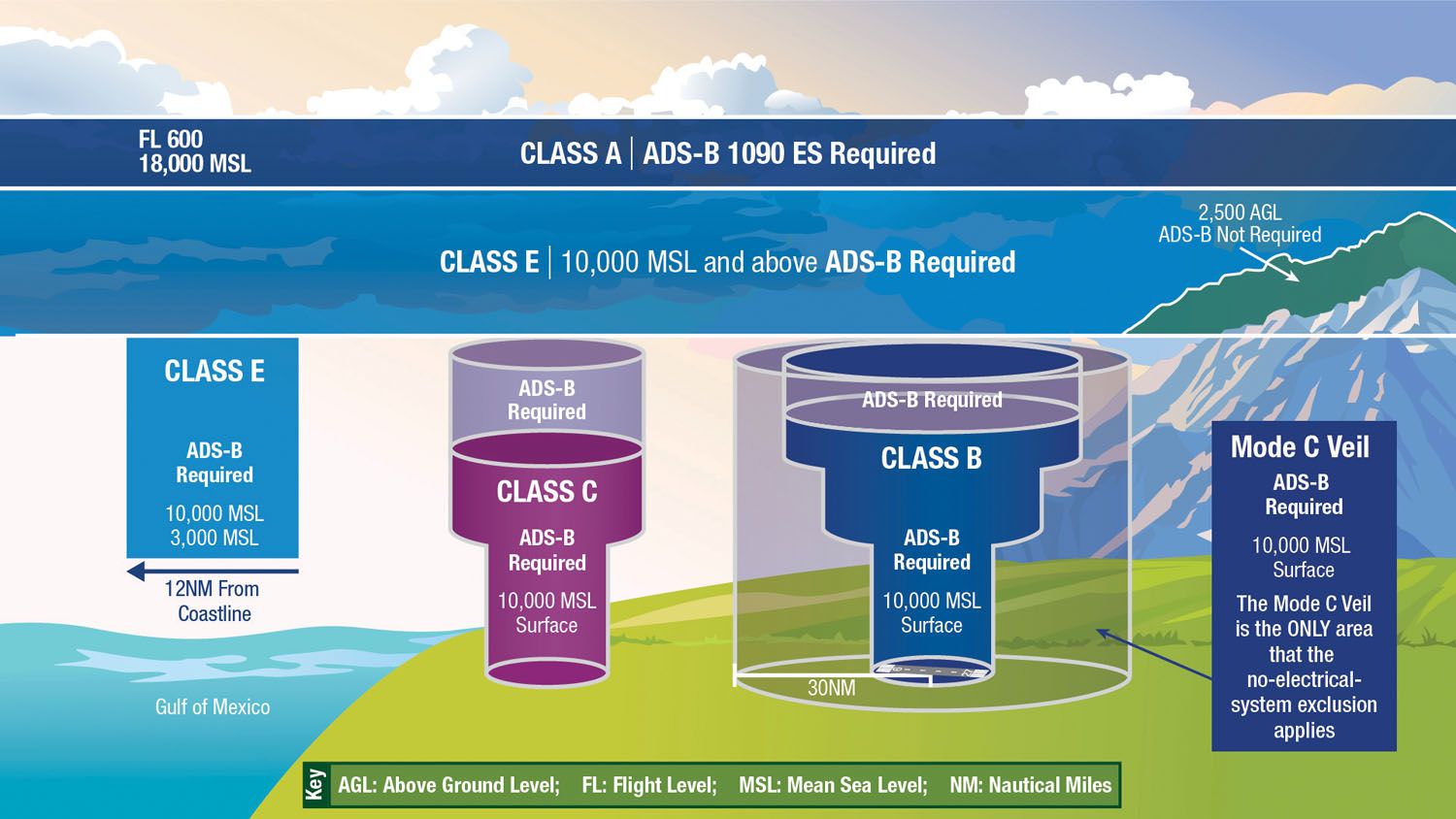
When Is ADS-B Definitely Required?
Regardless of the airplane configuration or equipment, if it flies in the following areas, it must have ADS-B Out:
- Above 10,000 feet, unless you’re within 2500 feet of the ground.
- Within Class B airspace (former Terminal Control Areas)
- Above Class B airspace. Some Class B areas go all the way to 10,000 feet, but others terminate at lower altitudes. Regardless, aircraft above Class B airspace must have ADS-B Out.
- Within Class C airspace (formerly called Airport Radar Surveillance Areas).
- Above Class C airspace. Class C airspace normally terminates at 4000 feet, but ADS-B out is required above it.
- Within Class A airspace. But when’s the last time you saw a Baby Ace in the flight levels?
- There’s also a restriction for flying certain altitudes over the Gulf of Mexico.
Note that ADS-B Out is not required to fly in Class D airspace (airport traffic areas) unless the Class D is within Class B or C airspace. Otherwise, it’s required in the airspace defined above.
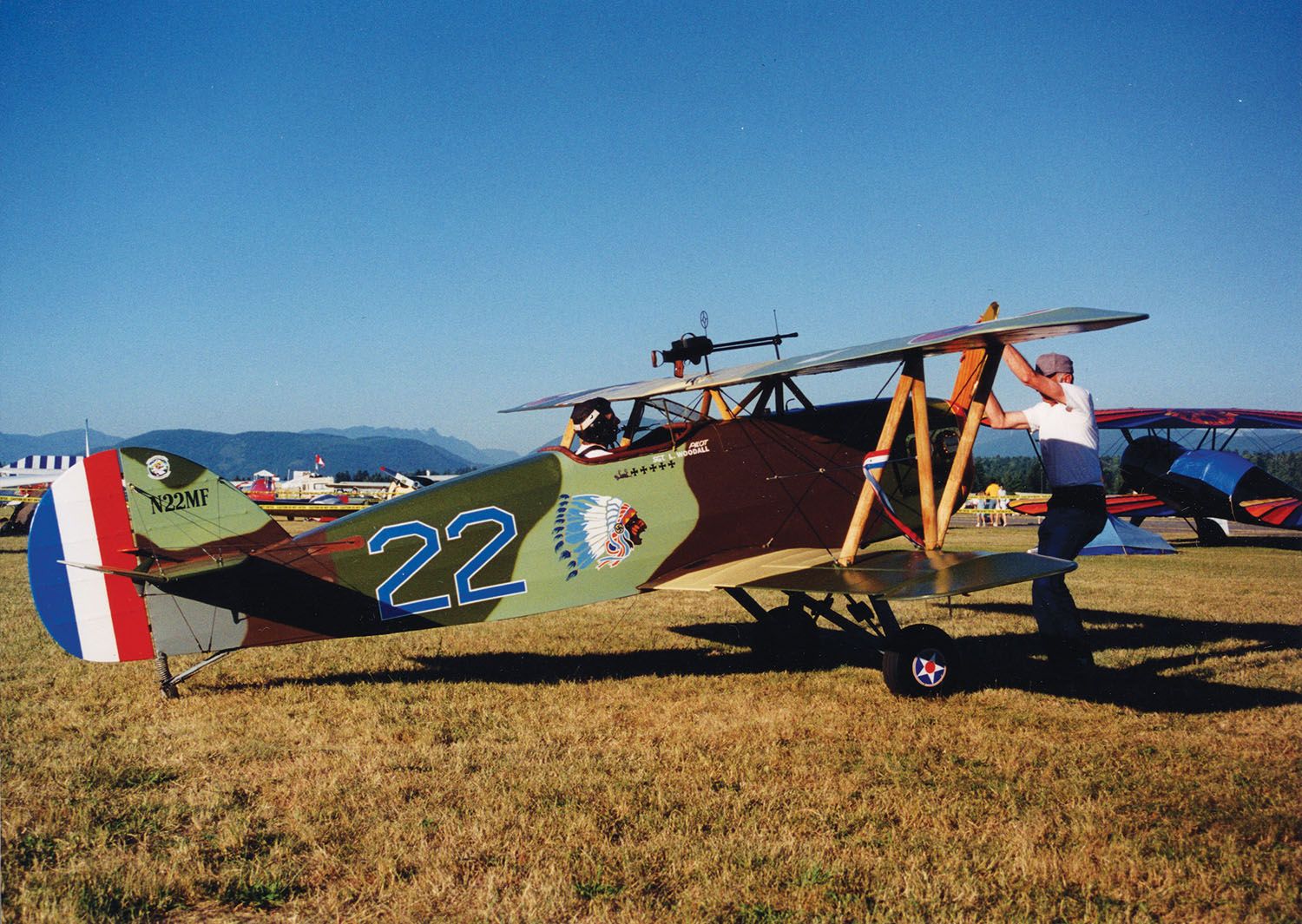
When Is ADS-B Possibly Required?
The area within 30 nautical miles of the primary airport for Class B airspace is called the Mode C Veil, as it is the area in which transponder-equipped aircraft must include an altitude encoder. Most aircraft are now also required to have ADS-B in the Veil.
However, there is an exclusion: If your airplane was originally certificated without an engine-driven electrical system, neither a transponder or ADS-B Out is required in the Veil. Note that this exclusion doesn’t apply to the other areas where ADS-B is required: You still need it for Class B or C airspace, or to fly above 10,000 feet. It only applies to flight in the Veil.
The ADS-B requirements are generally the same as those for transponders, but the ADS-B regulation is worded a bit differently. The transponder requirement refers to an engine-driven electrical system, while the ADS-B requirement merely says, “Electrical system.”
The AOPA queried the FAA about this, and the FAA chief counsel replied that the ADS-B exclusion is the same as that of the transponder one: The ADS-B exclusion for the Mode C Veil refers to engine-driven electrical systems.
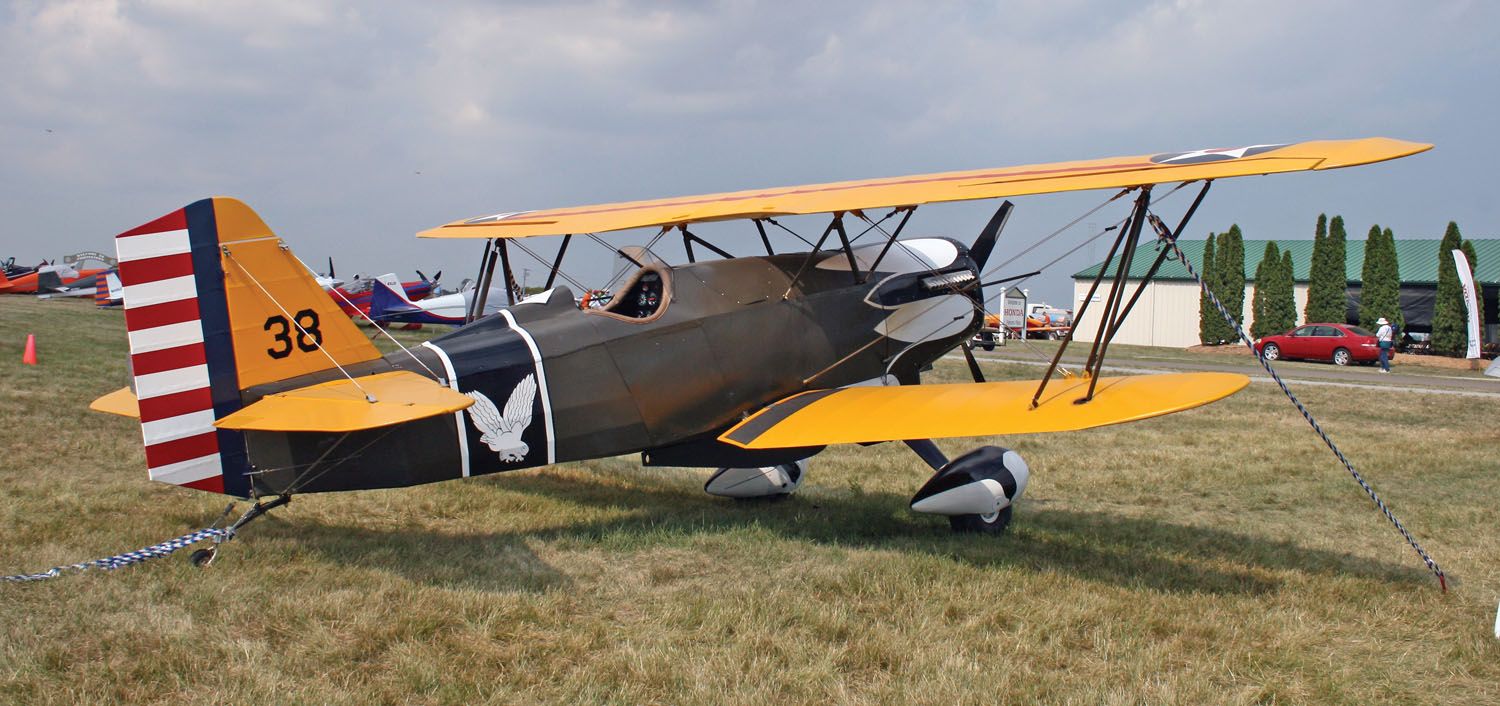
Exploring the Exclusion
So—what constitutes an engine-driven electrical system?
The FAA went through this when the transponder requirement was added. An engine-driven electrical system consists of an alternator or generator mechanically turned by the aircraft engine, a regulator to control the power and a battery to store it. If your aircraft does not have all three of these components, it’s not officially an engine-driven electrical system.
Some smaller engines have an engine-driven alternator that is used solely to power the ignition system (“lighting coil”). These systems don’t include regulators or batteries and hence would qualify for the exclusion as long as these components aren’t added. But if they’re added the exclusion no longer applies.
Wind generators are not engine-driven so they meet the exclusion requirements.
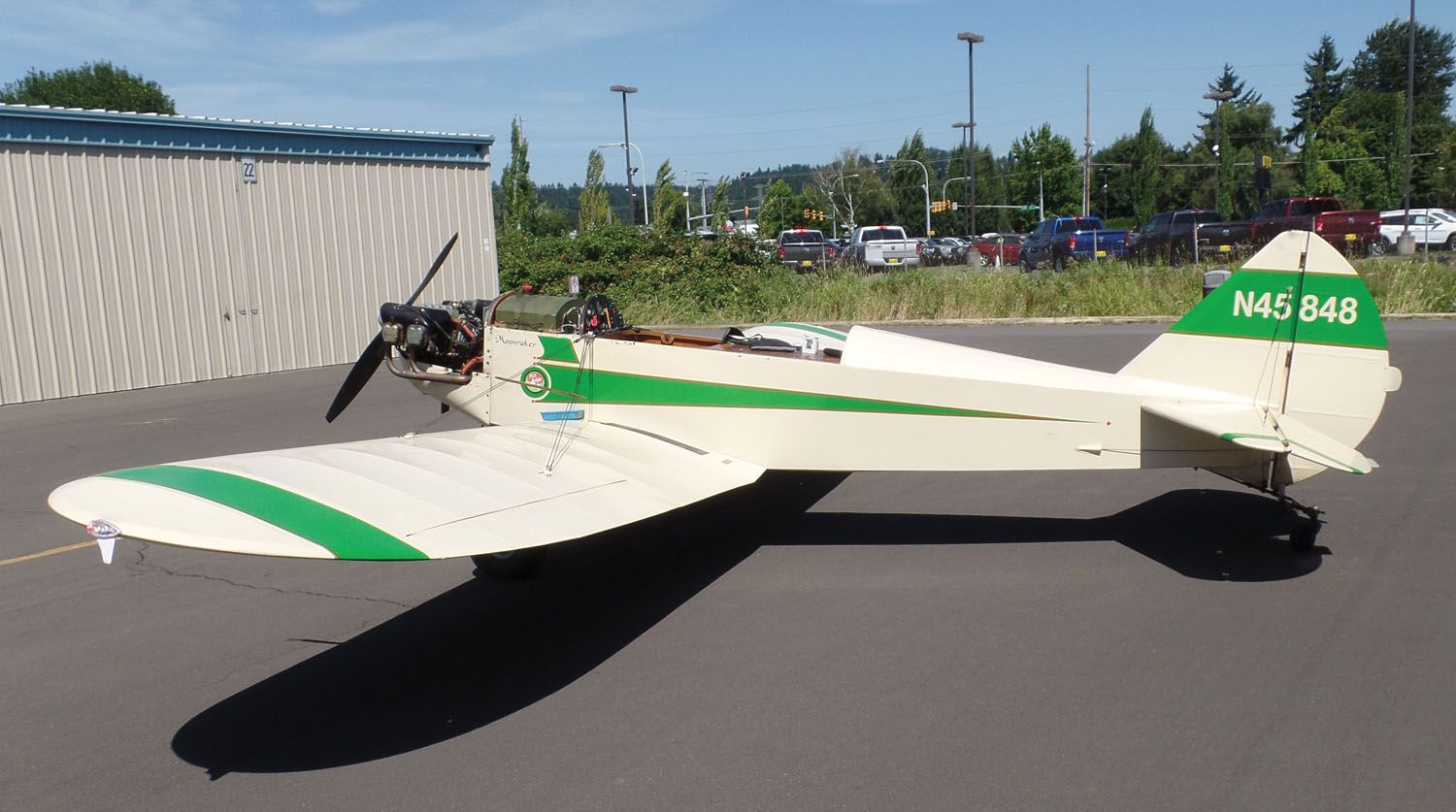
Options for Completed Homebuilts
OK, let’s assume you’ve got a RANS or Kitfox flying right now. Do you need a transponder and ADS-B?
The answer is obviously “yes” if you need to enter Class B or C airspace. The only point in question is the Mode C Veil. If you live far from any Class B airspace, that question is probably moot. Stay out of the airspace, and you won’t need a transponder or ADS-B Out.
My Fly Baby has an electrical system and is based just seven miles from the primary airport for the SeaTac Mode C Veil. I could have moved to an airport outside the Veil, but its current hangar is just a few minutes from my home. The plane already had a transponder, so I only had to install a compatible ADS-B Out unit. The cost was still about a quarter of the value of my airplane.
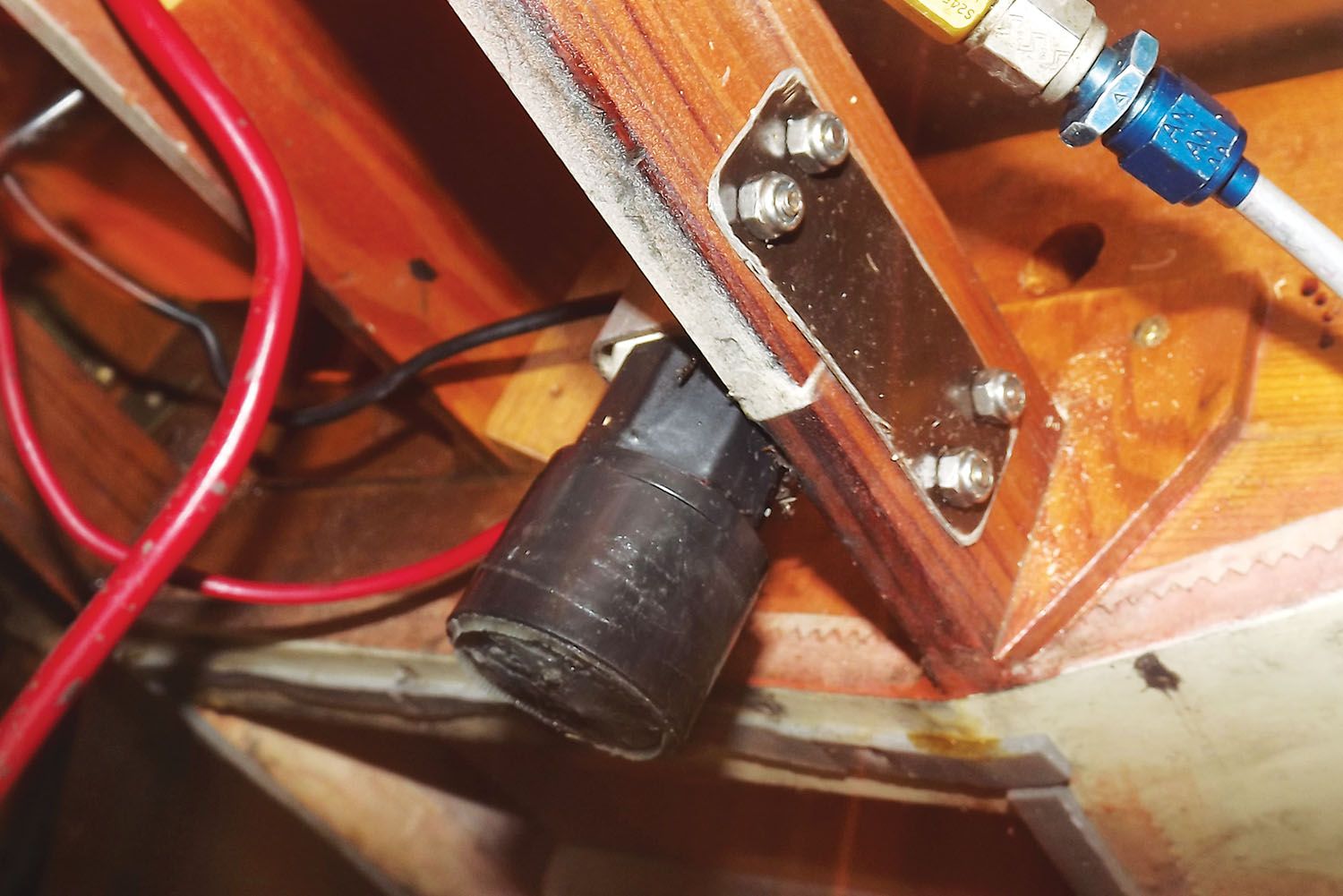
Options If You’re Still Building
Obviously, if you’re going to need to fly within Class B or C airspace when the airplane is completed, you’ll need to include a transponder and an ADS-B Out system.
If not, though, consider: How much do you need a generator or alternator in your airplane?
I’m not saying to leave off the radios or to steel yourself for a lifetime of hand propping. Leave off the generator/alternator and count on using an external charger between flights to keep the battery topped off.
Retain the starter, even without a generator. A typical aircraft battery will last very nicely through a flying day, even two. Some folks say they can get 10–20 starts from a common Odyssey PC-680 dry cell battery. My generator went bad about 20 years ago, and I flew a whole summer without it. My Fly Baby has an external jack that lets me easily plug in a battery charger between flights. Usually, I plugged in the battery to charge during preflight and again when I got back home for the day. I never ran short of power.
If you’re building, put in an entire electrical system except for a generator. This is how you present the airplane to the DAR: no electrical system. That way you qualify for the exclusion and can fly within the Mode C Veil without a transponder or ADS-B Out. And it’s marvelous how much simpler wiring is when all you have to connect is a battery, switch and radio.
Best leave it at that, though. If you present the airplane to the DAR without a generator but carrying a radio, GPS, lights, strobes, and a 200-watt amplifier for your Fender guitar, he or she might balk at putting their name on your paperwork. You’re getting a good break as it is; don’t push your luck.
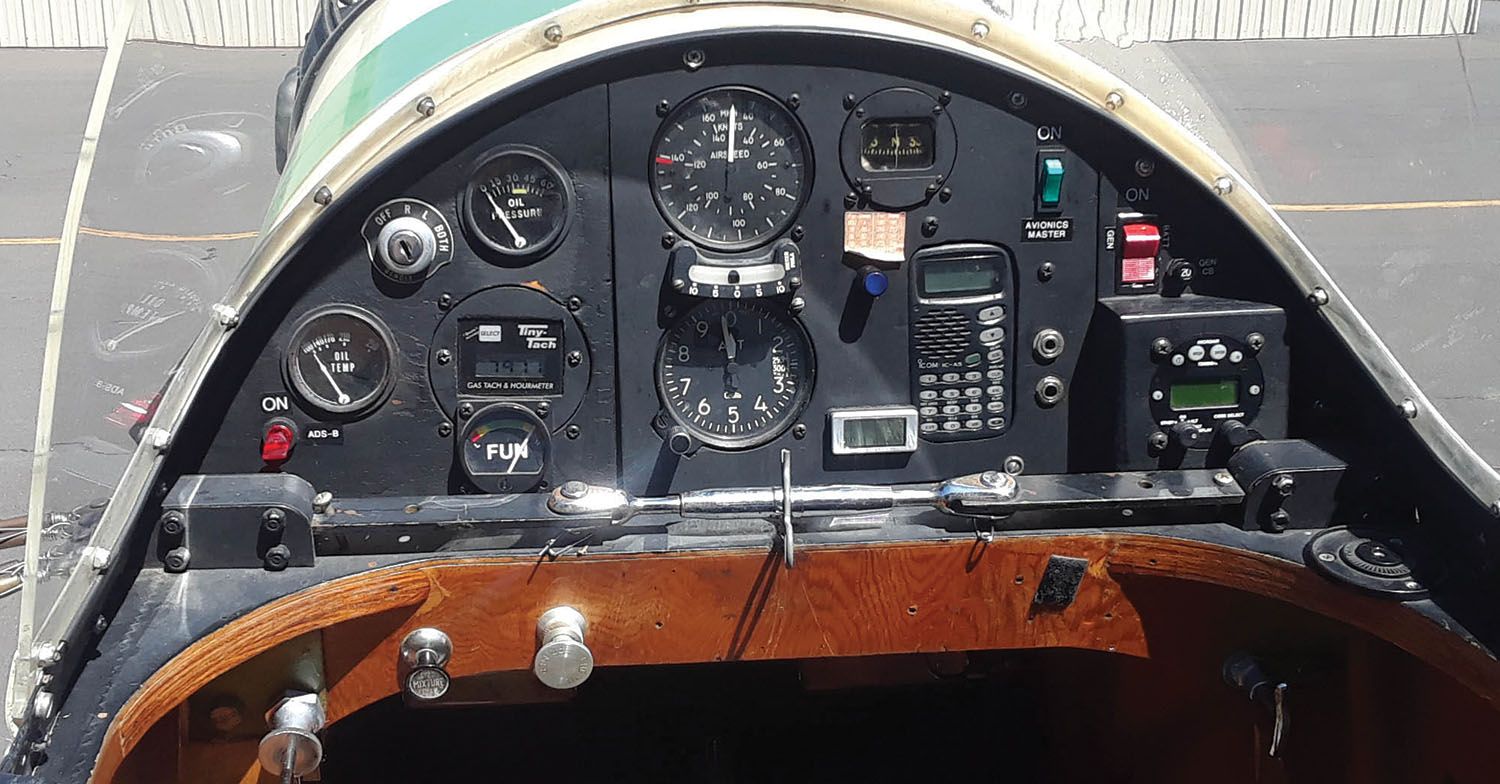
Shaving the Edge of the Law
What comes next might be interesting. What if you get your homebuilt licensed without a generator but add one once you have an airworthiness certificate?
A production airplane would require a Supplemental Type Certificate (STC) to document the change, and that would fall into the “…subsequently been certified with such a system installed” aspect of the regulation. A transponder and ADS-B would then be required to fly within the Veil.
But homebuilts don’t get STCs. Owners can modify the airplanes freely, only being subject to Phase I flight restrictions if the change is major. Homebuilts never get “subsequent” re-certification.
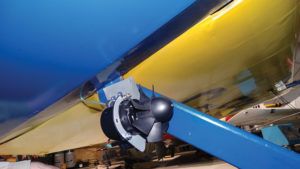
My interpretation is that you could install a generator after your homebuilt has been licensed—and the plane should still meet the letter of the law. You could legally fly within the Veil, but, of course, still couldn’t actually enter Class B or C airspace.
However, this could be a hassle. As far as I am aware, the FAA has no procedures to catch people without ADS-B, unless the plane is communicating with ATC. But if you get ramp-checked, you might have some ’splainin’ to do. In that case, you’re certainly better off if there’s no generator on the airplane.
I’ve also known people who noted that their homebuilt records don’t include mention of a generator or alternator, and have removed them to qualify for the exclusion. This, of course, would violate the regulation.
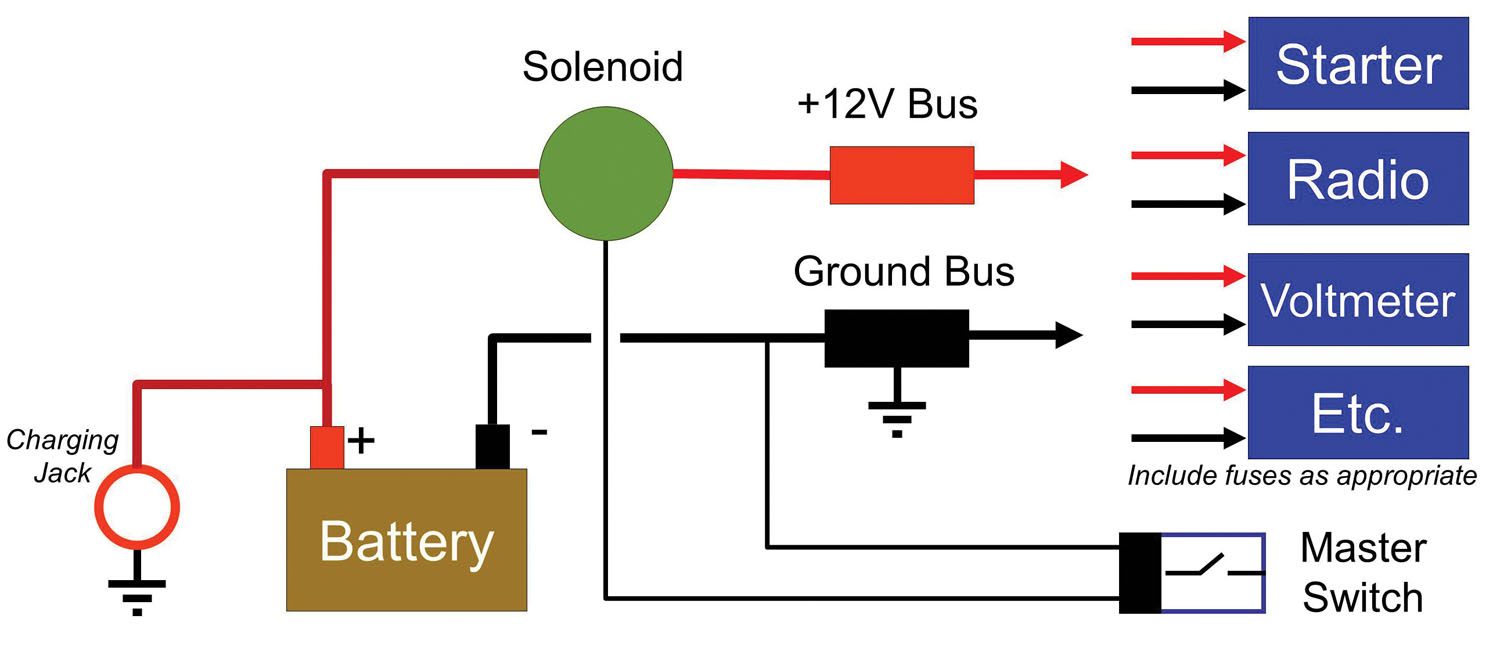
Wrap-Up
The ADS-B Out requirement hurt general aviation the worst in its most vulnerable area: low-cost, entry-level aircraft. Homebuilts or not, many owners have had to spend a significant percentage of their airplane’s value to stay legal if they wished to be based around major population centers.
But the lowest-cost airplanes often don’t have electrical systems. Unless you actually have to fly into Class B or C airspace, you should be fine. But you’ll have to stay out of the Mode C Veil if you have an engine-driven electrical system but no transponder and ADS-B Out.










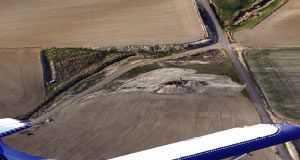
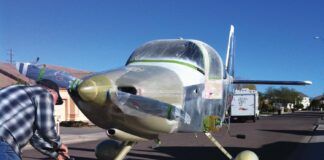

I wouldn’t take engineering advice from an attorney!
Ouch! 🙂
Ron “Dammit, Jim, I’m an engineer, not…” Wanttaja
In reading this article, I find it ironic that the most ‘modern’ iteration of aircraft – the all electric “battery” powered plane – also technically does not require ADS-B… as they by definition do not have an onboard charging system (those that do would be hybrid).
One other salient difference between the older Mode C rule and the newer ADS-B out rule is that the new ADS-B out rule requires that if an aircraft is equipoed the equipment must be on and functionally operating any time the aircraft is operated. That means you may never turn off the equipment so if a non engine-driven electrical aircraft total-loss battery system ever dies the pilot will be in instant violation. This “always on” rule applies no matter where in the United States the airplane is. It can be on the ground taxiing in the middle of the wilderness and if it so happens to be equipped the system must be on. Even if re-positioning taxiing from one camp site to another on the ground. The old transponder rules allowed the pilot to turn off or standby the transponder when it was not in required airspace. This is huge for non engine-driven electrical aircraft because of the lack of a charging system to allow continuous uninterrupted operation of ADS-B equipment. Sooner or later the onboard battery will die. Under the old Mode C rules a non engine-driven electrical aircraft could turn off the transponder or master switch and save the battery until they needed it again. This can inhibit installation of equipment in non engine-driven electrical aircraft. Some of these non engine-driven aircraft like Luscombes and Champs will go on long jouneys including camping so equipping is a Catch 22.
I went the other way, I already had a transponder (garmin GTX327) and went ahead and installed ADSB-out via the uavionix echouat and gps reciever. Was it expensive? well yes, compared to my Challenger 2 aircraft it was alot. But it does provide more safety to me and my fellow aviators. And when I sell it, it will be a feature.
I have sympathy for the wooden aircraft crowd. They came out with a simple ADS-B solution that replaces a wing light. It would be just as simple to come up with a wind driven ads-b that could be mounted anywhere on the airplane. The FAA could help a lot with that by dropping the rule that you need to carry an antique transponder in addition to the ads-b, which is entirely redundant.
My point is that under current regulations a non engine-driven electrical system aircraft cannot be practically equipped with ADS-B out because of the “always on” requirement. What we need is a new exemption allowing non engine-driven electrical aircraft to equip with ADS-B out AND be allowed to turn off the system when not within rule airspace. Without that last part the only non engine-driven electrical aircraft that could even consider equipping would be one that only flies short hops between ground battery charging sessions to ensure the aircraft is never operating with a dead battery which equates to a violation of the “always on” rule no matter where, when or on the ground or in the air.